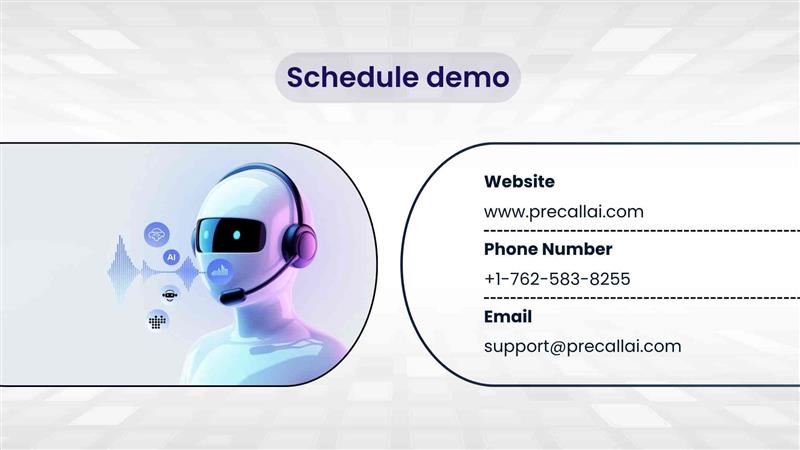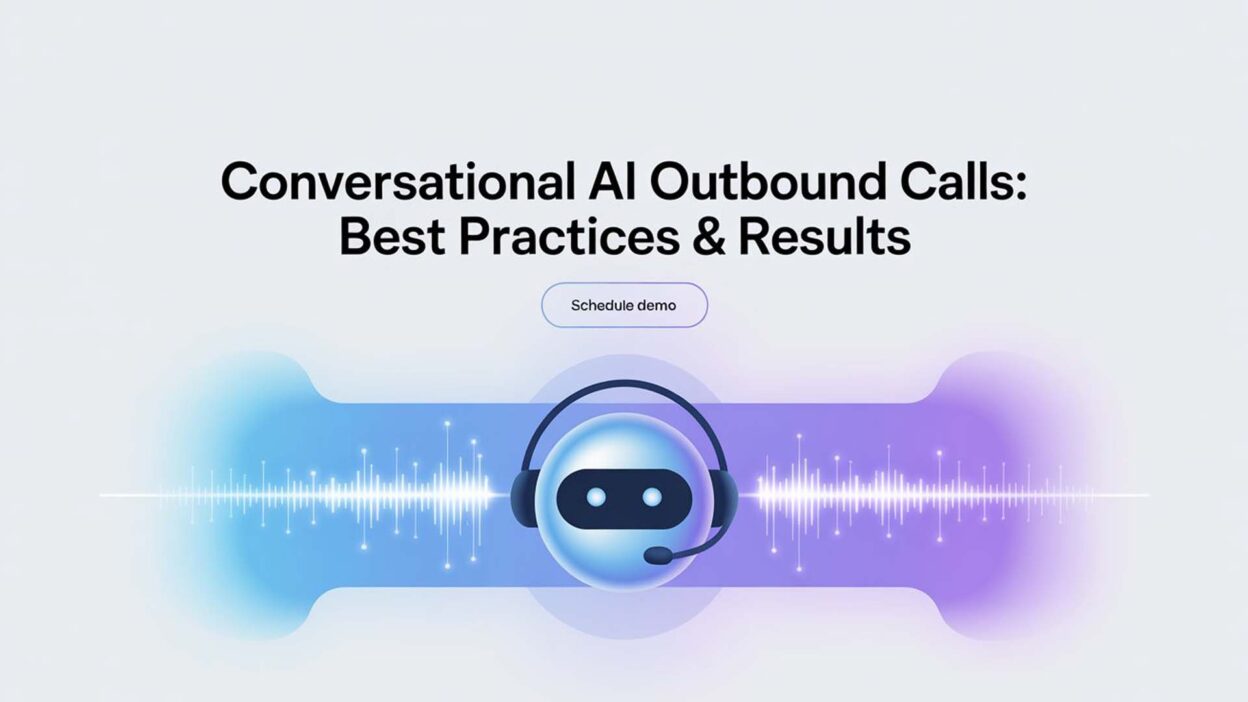The Evolution of Modern Sales Outreach for Conversational AI for Outbound Calls
The world of customer outreach has transformed dramatically in recent years. While traditional cold calling methods continue to struggle with declining answer rates and engagement, businesses are discovering a game-changing solution: conversational AI for outbound calls. This technology isn’t just automating conversations—it’s revolutionizing how companies connect with prospects and customers.
Table of Contents
Unlike robotic automated systems of the past, modern conversational AI for outbound calls creates genuine, human-like interactions that feel natural and engaging. The results speak for themselves: companies implementing these systems report increased connection rates, improved customer satisfaction, and significant cost savings while scaling their outreach efforts.
But success with conversational AI isn’t automatic. It requires understanding the technology, implementing proven strategies, and following best practices that respect both regulatory requirements and customer expectations. Let’s explore how forward-thinking businesses are leveraging this powerful tool to transform their outbound calling operations.
Conversational AI for Outbound Calls
Conversational AI for outbound calls represents a sophisticated blend of natural language processing, machine learning, and voice synthesis technologies. Unlike traditional automated calling systems that follow rigid scripts, these AI agents can engage in dynamic, context-aware conversations that adapt to each prospect’s responses and needs.
The technology works by analyzing conversation patterns, understanding intent, and generating appropriate responses in real-time. Modern systems can handle complex scenarios like objection handling, appointment scheduling, and even basic problem-solving, all while maintaining a conversational flow that feels remarkably human.
What sets conversational AI apart from earlier automation attempts is its ability to process nuanced language, recognize emotional cues, and adjust its approach accordingly. When a prospect expresses hesitation, the AI can acknowledge their concerns and provide relevant information. If someone seems rushed, it can quickly get to the point. This adaptability makes conversations more effective and less frustrating for recipients.
The underlying technology continues advancing rapidly. Today’s conversational AI systems can detect speech patterns, analyze sentiment in real-time, and even recognize when to transfer a call to a human agent. This sophisticated capability means businesses can automate the initial stages of outbound calling while ensuring complex situations still receive human attention.
Key Benefits of Implementing Conversational AI for Outbound Calls
The advantages of conversational AI for outbound calls extend far beyond simple automation. Companies implementing these systems experience measurable improvements across multiple business metrics.
- Scalability and Efficiency:
Perhaps the most immediate benefit is the ability to scale outbound calling operations without proportionally increasing headcount. A single conversational AI system can handle hundreds of simultaneous calls, operating 24/7 without breaks, sick days, or vacation time. This scalability allows businesses to reach more prospects, follow up more consistently, and maintain continuous engagement campaigns. - Cost Reduction:
While human sales representatives remain valuable for complex deals and relationship building, conversational AI for outbound calls significantly reduces the cost per contact. Companies report savings of 60-80% on initial outreach costs while maintaining or improving connection quality. These savings can be reinvested in other areas of the business or used to expand market reach. - Improved Consistency:
Human agents naturally vary in their approach, energy levels, and messaging consistency throughout the day. Conversational AI delivers the same high-quality interaction whether it’s the first call of the day or the thousandth. This consistency ensures every prospect receives the same professional experience and key messaging points. - Data Collection and Analysis:
Every conversation with conversational AI generates valuable data about prospect responses, objections, preferences, and outcomes. This information provides insights that would be difficult or impossible to capture with traditional calling methods. Businesses can analyze conversation patterns, identify successful approaches, and continuously optimize their outreach strategies. - Enhanced Lead Qualification:
Conversational AI for outbound calls excels at initial lead qualification, asking consistent questions, and gathering standardized information from every prospect. This systematic approach ensures sales teams receive well-qualified leads with comprehensive background information, allowing them to focus on closing deals rather than basic qualification.
Best Practices for Conversational AI Outbound Call Campaigns
Success with conversational AI for outbound calls requires careful planning and execution. The most effective implementations follow proven best practices that maximize results while maintaining positive customer relationships.
- Start with Clear Objectives:
Before implementing conversational AI for outbound calls, define specific, measurable goals. Are you focused on lead generation, appointment setting, customer surveys, or follow-up campaigns? Different objectives require different approaches, scripts, and success metrics. Clear goals guide system configuration and help measure ROI effectively. - Craft Natural, Conversational Scripts:
The script forms the foundation of successful conversational AI outbound calls. Write scripts that sound natural and conversational, avoiding robotic language or overly promotional tone. Include multiple response paths to handle various prospect reactions, and ensure the AI can gracefully handle unexpected responses by redirecting the conversation back on track. - Implement Proper Disclosure:
Transparency builds trust and ensures regulatory compliance. Configure your conversational AI for outbound calls to clearly identify itself as an AI system early in the conversation. This disclosure should feel natural rather than legalistic, something like “Hi, this is an AI assistant calling on behalf of [Company Name].” - Design Intelligent Call Routing:
Not every conversation should remain with the AI throughout the entire interaction. Establish clear criteria for when conversational AI should transfer calls to human agents. Complex technical questions, upset customers, or high-value prospects might warrant immediate human attention. Smart routing ensures the right resource handles each situation. - Optimize Timing and Frequency:
Conversational AI for outbound calls allows for precise timing optimization. Analyze data to identify when your target audience is most likely to answer and engage. Respect frequency preferences and implement intelligent scheduling that avoids calling the same prospect too frequently. Most successful campaigns call prospects 3-5 times over several weeks before marking them as unresponsive. - Personalize at Scale:
Use available data to personalize each conversation. Conversational AI can reference the prospect’s company, industry, location, or previous interactions to create more relevant conversations. This personalization makes prospects more likely to engage and demonstrates that the call isn’t purely random.
Technical Implementation Strategies
Implementing conversational AI for outbound calls requires careful attention to technical details that can make or break campaign success.
- Voice Quality and Natural Speech: Invest in high-quality voice synthesis that sounds natural and professional. The AI’s voice should match your brand personality—professional for B2B companies, friendly for consumer brands. Many platforms offer multiple voice options, so test different voices with your target audience to identify the most effective option.
- Integration with Existing Systems: Conversational AI for outbound calls works best when integrated with your existing CRM, marketing automation, and sales systems. This integration enables real-time data updates, automatic lead scoring, and seamless handoffs to human agents when necessary. Plan these integrations early in the implementation process.
- Compliance and Legal Considerations: Ensure your conversational AI for outbound calls complies with all relevant regulations, including TCPA in the United States, GDPR in Europe, and local telemarketing laws. This includes maintaining proper consent records, respecting do-not-call lists, and providing easy opt-out mechanisms. Non-compliance can result in significant fines and damage to your reputation.
- Testing and Quality Assurance: Before launching full campaigns, conduct extensive testing of your conversational AI for outbound calls. Test various scenarios, objections, and conversation paths to ensure the AI responds appropriately. Monitor initial campaigns closely and be prepared to make adjustments based on real-world performance.
Measuring Success and ROI
Tracking the right metrics is essential for optimizing conversational AI for outbound calls and demonstrating business value.
- Connection and Engagement Rates:
Monitor how often prospects answer calls and engage in meaningful conversations. Successful conversational AI implementations typically achieve higher answer rates than traditional cold calling because the AI can call at optimal times and doesn’t suffer from caller fatigue. - Lead Quality and Conversion:
Track the quality of leads generated through conversational AI for outbound calls. Measure how qualified leads are when passed to sales teams and monitor their progression through the sales funnel. High-quality AI implementations often generate better-qualified leads than traditional methods because of consistent qualification processes. - Cost Per Acquisition:
Calculate the total cost of acquiring customers through conversational AI outbound calls, including technology costs, setup expenses, and ongoing management. Compare this to traditional outbound calling costs to demonstrate ROI. Most businesses see significant cost improvements within the first quarter of implementation. - Customer Satisfaction:
Survey prospects and customers about their experience with conversational AI for outbound calls. While some people prefer human interaction, many appreciate the efficiency and consistency of well-designed AI conversations. Monitor satisfaction scores and adjust approaches based on feedback.
Overcoming Common Challenges
While conversational AI for outbound calls offers significant benefits, implementation isn’t without challenges. Understanding and preparing for these obstacles increases your chances of success.
- Handling Complex Objections:
Prospects may raise objections or questions that fall outside the AI’s training. Develop comprehensive objection-handling scripts and establish clear escalation paths to human agents. The goal isn’t for AI to handle every possible scenario, but to manage common situations effectively while recognizing when human intervention is needed. - Maintaining Authenticity:
Some prospects may feel deceived if they discover they’re speaking with AI mid-conversation. Address this by being upfront about AI involvement while emphasizing the value being provided. Focus on how the AI can quickly connect them with relevant information or human experts when needed. - Technology Limitations:
Current conversational AI for outbound calls excels at structured conversations but may struggle with highly complex or emotional situations. Acknowledge these limitations and design campaigns that play to the technology’s strengths while having backup plans for challenging scenarios.
Future Trends and Opportunities
The conversational AI for outbound calls landscape continues evolving rapidly, with new capabilities emerging regularly.
- Enhanced Emotional Intelligence:
Future systems will better recognize and respond to emotional cues, making conversations feel even more natural and empathetic. This advancement will expand the range of situations where conversational AI can effectively replace human callers. - Improved Integration Capabilities:
Expect better integration with social media, email platforms, and other communication channels, enabling truly omnichannel conversational AI experiences. This integration will provide prospects with consistent experiences across all touchpoints. - Advanced Analytics and Insights:
Machine learning algorithms will provide deeper insights into conversation patterns, prospect preferences, and successful approaches. These insights will enable continuous optimization and more sophisticated targeting strategies.
Read More: Enhancing Connections: AI Voice And Virtual Assistants
Conclusion

Conversational AI for outbound calls represents a significant opportunity for businesses seeking to scale their outreach efforts while improving efficiency and results. The technology has matured to the point where properly implemented systems can deliver genuine business value through increased connection rates, better lead qualification, and significant cost savings.
Success requires careful planning, attention to best practices, and ongoing optimization based on real-world results. Businesses that invest time in proper implementation, maintain focus on customer experience, and stay current with regulatory requirements will find conversational AI for outbound calls to be a powerful tool for growth.
The future belongs to companies that can effectively blend AI efficiency with human expertise, using conversational AI to handle initial outreach and qualification while ensuring complex situations receive appropriate human attention. As the technology continues advancing, the opportunities for sophisticated, effective automated outreach will only expand.
For businesses considering conversational AI for outbound calls, the question isn’t whether to implement this technology, but how quickly you can do so effectively. Companies that move decisively while following proven best practices will gain significant competitive advantages in their markets.






[…] Read More: Conversational AI Outbound Calls: Best Practices & Results […]
[…] Read More: Conversational AI Outbound Calls: Best Practices & Results […]